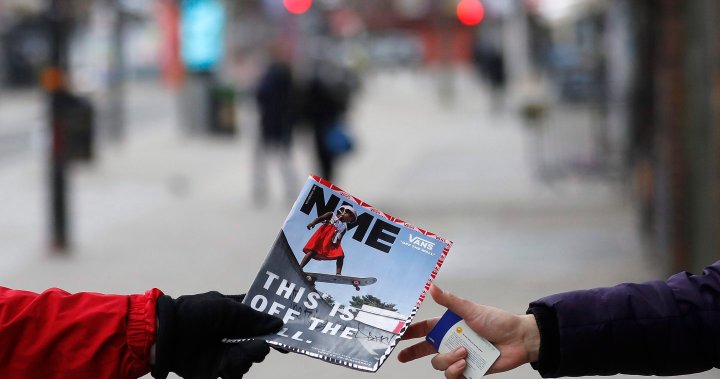During my high school and university years, I had a weekly ritual of visiting the Rexall drug store in my small prairie hometown every Wednesday afternoon. This was when the new music magazines hit the shelves. Despite my parents’ disapproval, I used the money I earned from stocking shelves at the local grocery store to buy the latest editions of Rolling Stone, CREEM, Trouser Press, Circus, and Music Express. I remember the shock I caused when I brought home the infamous Rolling Stone issue with the Sex Pistols on the cover in 1978. My parents wondered if I needed help for my obsession with music magazines.
As the years went by, my love for music magazines only grew. Whenever I came across a copy of Melody Maker or The NME in specialty bookstores (even though they were often outdated in Canada), I couldn’t resist buying them just to get a glimpse into the UK’s music scene. Then Chapters and Indigo arrived, offering a wide selection of magazines, and my spending on music publications skyrocketed to several thousand dollars per year. I couldn’t resist buying every issue of Alternative Press, Raygun, Option, Shift, Maximum RocknRoll, Modern Drummer, Canadian Musician, Chart Attack, and Graffiti. However, my true passion remained with the British publications. There were so many fantastic music magazines from the UK, especially in the late 1990s. I eagerly collected issues of Q, Select, Vox, Mojo, Record Collector, Uncut, The Word, The Face, Smash Hits, Sounds, and Kerrang, among others. I kept each issue carefully organized in my basement, creating a valuable research archive for my radio show, the Ongoing History of New Music.
But why did British music magazines thrive so much? The answer lies in the role they played since the 1950s. While BBC radio was reluctant to cover popular music extensively, print publications like NME and Melody Maker took up the mantle and became information sources, taste-setters, and pioneers in music culture. They created new scenes, invented genres, and heavily influenced the direction of music. Without their in-depth coverage and occasional fictional stories, many musical movements such as folk, psych, punk, Britpop, and more would not have flourished as they did.
Unfortunately, the golden age of music magazines has come to an end. With the rise of the internet, people no longer need to wait for a magazine to learn about music news. Circulation declined rapidly, and advertising revenue from record labels dwindled as physical record sales declined. Many experienced writers were let go, and magazines faced a struggle to survive. Bloggers and streaming platforms took the spotlight as the new influencers.
Even so, I continue to purchase a few physical publications like Mojo and Record Collector, though I sometimes question the publishers’ choices of microscopic font sizes that strain my aging eyes. It’s disheartening to see so many once-great magazines go out of business. Graffiti, Sounds, Music Express, Vox, Melody Maker, and Select are just a few examples of iconic publications that disappeared. Smaller magazines like Q put up a fight for survival but ultimately succumbed in 2020.
However, there are still reasons to be hopeful. Online subscriptions offer a more affordable and up-to-date option for accessing music news. Digital platforms like iPads allow for convenient reading on the go. And there are signs of life in physical publications as well. Kerrang continues to publish quarterly, CREEM magazine has made a comeback in its irreverent fashion, and The NME has returned to print with a promise of six issues a year. Mojo and Record Collector also seem determined to keep the print medium alive.
As for my collection of old magazines, they became a safety hazard and attracted rodents in my basement. I eventually sold them to a used record store owner. Looking back, it was a mistake because many of those issues are now highly sought after by collectors. I recently saw my old “Rock is Sick” edition of Rolling Stone up for auction with an asking price of $770. Lesson learned.
In conclusion, the era of music magazines may be fading, but their impact on music culture and the memories they created will always remain with those who cherished them.
Denial of responsibility! VigourTimes is an automatic aggregator of Global media. In each content, the hyperlink to the primary source is specified. All trademarks belong to their rightful owners, and all materials to their authors. For any complaint, please reach us at – [email protected]. We will take necessary action within 24 hours.


